Why Do Cats Make Biscuits and Purr? Decoding This Cute Behavior
Why do cats make biscuits? This behavior, also known as kneading, is an endearing feline habit that stems from kittenhood and signifies contentment.
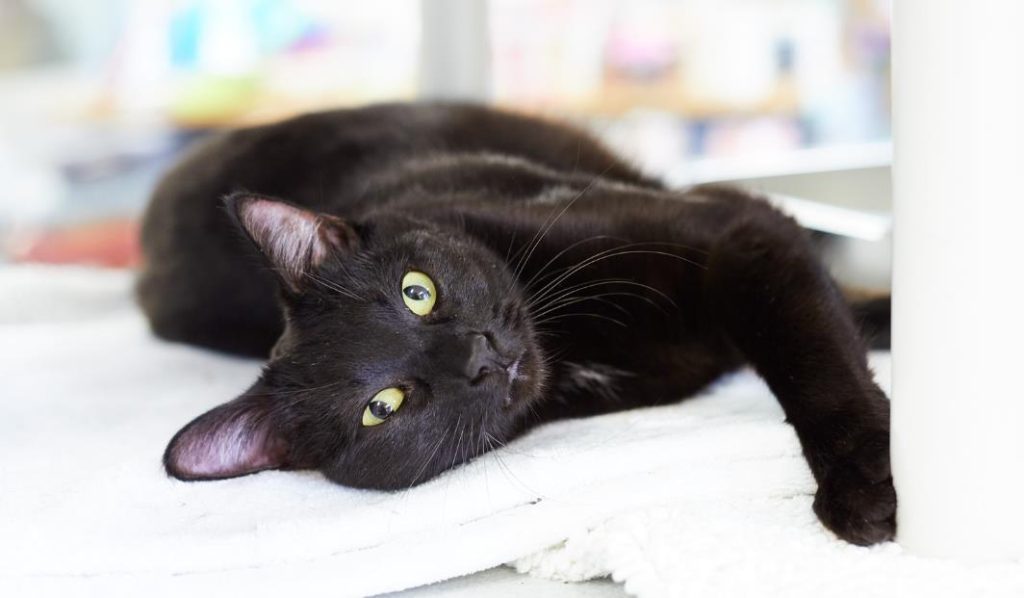
Did you know that the average cat spends an astonishing 15% of their waking hours engaged in the endearing behavior of “making biscuits and purr”? This rhythmic pressing of their front paws against a soft surface is more than just a quirky cat habit – it’s a fascinating insight into the feline psyche.
Cats have an innate ability to make biscuits and purr, also known as kneading, which stems from their kittenhood when they would knead their mother’s belly to stimulate milk flow. As adult cats continue this behavior, it serves as a comforting ritual from their early days. Kneading is an instinctual behavior that also helps cats create a comfortable resting spot and mark their territory with scent glands in their paw pads.
Cats often engage in this behavior when they are content, relaxed, and seeking comfort or preparing for rest. When directed towards their human companions, it can also signify affection and bonding, making it a delightful way for feline friends to express their love. Understanding the reasons behind this unique behavior can help cat owners better appreciate and cater to their furry companions’ needs.
Kneading: A Ritual from Kittenhood
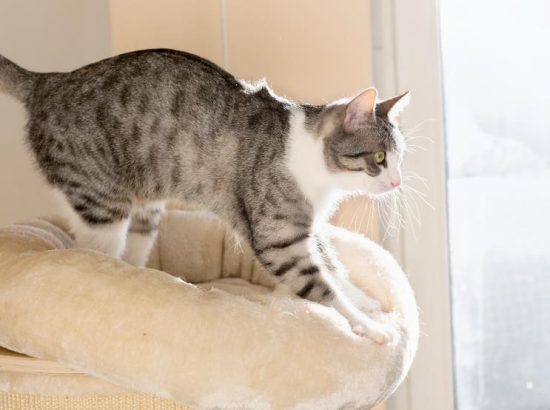
When kittens are born, they knead their mother’s belly to stimulate the flow of milk, a behavior known as nursing. This early behavior can persist into adulthood as a comforting ritual for cats. Despite the common misconception that cats kneading is the result of being weaned from their mother’s milk too early, most adult cats knead regardless of when they stopped nursing. Kneading is a behavior that cats carry with them from kittenhood, serving as a soothing and pleasurable activity that they continue to engage in throughout their lives.
Nursing Behavior Carried into Adulthood
As kittens, cats knead their mother’s belly to encourage the flow of milk, a natural instinct that helps them nurture and sustain themselves. This nursing behavior, which involves the rhythmic pressing of their paws, can remain a part of a cat’s repertoire even after they’ve been weaned. Contrary to popular belief, the act of cats making biscuits and purr is not necessarily a sign of premature weaning, but rather a comforting habit that they maintain into adulthood.
Comforting Ritual from Kittenhood
Cats’ kneading behavior is often a remnant of their kittenhood experiences. When cats make biscuits and purr on soft blankets or their owners’ laps, they are engaging in a familiar and soothing ritual that provides them with a sense of security and well-being. This behavior, deeply rooted in their early development, continues to offer cats a source of comfort and relaxation throughout their lives.
An Instinct from Their Wild Roots
The innate behavior of cats making biscuits and purr, or kneading, has its roots in the wild ancestry of these feline companions. In their natural habitats, a cat’s wild ancestors would knead grass or foliage to create a soft and comfortable spot for resting or giving birth. Even though modern house cats live in plush environments, they still instinctively knead before settling down for a nap, likely trying to make their resting spot as cozy as possible.
Creating a Comfortable Resting Spot
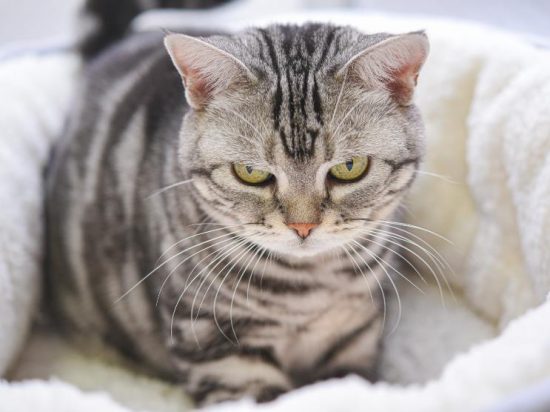
By kneading on soft surfaces like blankets, pillows, or their human’s lap, cats are tapping into this deep-seated instinct to prepare a comfortable place to rest. This behavior helps them feel secure and relaxed, allowing them to enjoy their nap or downtime fully. The rhythmic motion of kneading helps cats create the perfect resting spot, just as their wild ancestors would have done.
Territorial Marking with Scent Glands
In addition to creating a cozy resting place, cats also knead to mark their territory. Cats have scent glands in their paw pads, and the act of kneading helps them leave their unique scent on various surfaces, including their human companions. This territorial marking behavior is another driving factor behind a cat’s tendency to knead on different objects and people, as they claim these items as part of their domain.
Signs of Contentment and Relaxation
When cats knead, or make “biscuits and purr,” they are often indicating that they are happy, content, and relaxed. The rhythmic motion of kneading can be soothing for cats, similar to how humans may enjoy kneading dough when baking. This repetitive action helps cats release tension and feel more at ease.
Rhythmic Motion for Releasing Tension
The repetitive motion of kneading is associated with pleasurable emotions in cats, as the experience of nursing from their mother as kittens was a positive one. For many cats, kneading continues to be a behavior they engage in to self-soothe and express their contentment. When a cat is kneading, it’s a clear sign that they are in a state of relaxation and trust, often directing this behavior towards their human companions as a way to show their affection.
Association with Pleasurable Emotions
Kneading is a behavior that cats carry with them from their kittenhood, serving as a soothing and pleasurable activity that they continue to engage in throughout their lives. By understanding the reasons behind a cat’s biscuit-making, such as their need for comfort, security, and self-soothing, pet owners can better determine how to interpret this endearing behavior and foster a stronger bond with their feline friends. After all, the way a cat kneads can be a reliable indicator of how they truly feel about their human, making it a valuable insight into the love and trust they have for their caretakers.
Why do cats make biscuits?
Cats often knead as a way to seek comfort or prepare for rest. They may knead on soft, warm surfaces like blankets, pillows, or their human’s lap to create a cozy spot to settle down and relax. This behavior can be seen as a lingering habit from their kittenhood when they would knead their mother’s belly to stimulate milk flow. As adults, cats continue this behavior as a comforting ritual from their early days.
Seeking Comfort or Preparing for Rest
The act of kneading, also known as “making biscuits and purr,” allows cats to create a comfortable resting spot. Cats may knead on their owner’s lap, a soft blanket, or any other plush surface to prepare for a nap or period of relaxation. This behavior stems from their instinctual need to create a cozy and secure environment, much like their wild ancestors did when kneading grass or foliage to make a comfortable resting spot.
Self-Soothing During Anxiety or Stress
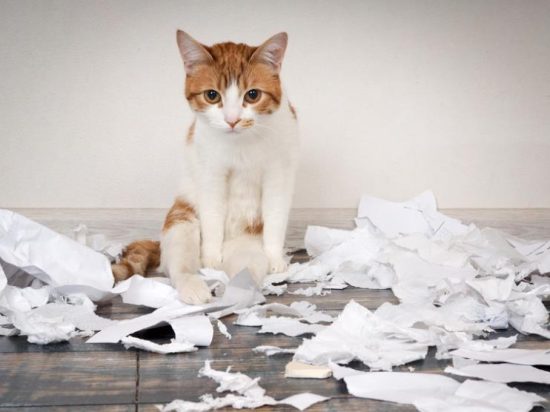
In addition to seeking comfort and preparing for rest, cats may also knead as a method of self-soothing during times of anxiety or stress. An increase in the frequency or duration of a cat’s kneading behavior can be an indication that they are trying to calm themselves and manage their emotions. Understanding the motivations behind a cat’s “biscuit-making” can help owners better meet their cat’s needs for security and relaxation.
A Form of Affection and Bonding
When cats knead on their human companions, it can be a clear sign of affection and bonding. Cats often reserve this behavior for trusted individuals, indicating that they feel comfortable and safe in their presence. This behavior demonstrates the trust and attachment a cat has developed with their human, making kneading, or “making biscuits and purr,” a cherished expression of feline love and companionship.
By kneading on their owner, cats are conveying a sense of trust and vulnerability. This rhythmic, comforting motion is something cats typically only engage in with those they feel completely at ease with. When your cat chooses to knead on you, it’s a testament to the bond you’ve built and the cat’s genuine affection for you.
Marking Their Human as ‘Theirs’
In addition to expressing contentment, cats also use kneading as a way to mark their human as part of their territory. Cats have scent glands in their paw pads, and by kneading on you, they are depositing their unique scent to claim you as their own. This territorial behavior is a clear indication of the depth of your cat’s attachment and their desire to keep you close as a valued member of their social circle.
When Kneading Becomes a Concern
While kneading is a normal and healthy behavior in cats, it can become a concern in certain situations. Excessive or agitated kneading, as well as changes in the frequency or duration of this behavior, may indicate an underlying issue that needs to be addressed.
If a cat starts kneading excessively or appears distressed or agitated while doing so, it could be a sign of a deeper problem. This type of kneading behavior may suggest that the cat is experiencing anxiety, stress, or discomfort, and it’s important to observe the cat’s overall body language and behavior to determine the underlying cause.
Alterations in the frequency or duration of a cat’s kneading behavior can also be a cause for concern. If a cat begins kneading for longer periods or more often than usual, it may signal that something is amiss. These changes in kneading patterns could be a response to changes in the cat’s environment, health, or emotional state, and should be addressed promptly.
In cases where a cat’s kneading behavior becomes excessive or appears distressed, it’s crucial to consult with a veterinarian. They can help identify the underlying cause and provide appropriate treatment or management strategies to ensure the cat’s overall well-being and address any underlying issues that may be contributing to the concerning kneading behavior.
Managing Your Cat’s Biscuit-Making
While cat kneading, also known as “making biscuits and purr,” is a natural and often endearing behavior, it can become problematic when directed towards furniture, clothing, or other surfaces that the owner doesn’t want damaged. To manage this, owners can employ several strategies to channel their feline friend’s paw-pressing tendencies into more suitable areas.
Providing Dedicated Kneading Surfaces
One effective approach is to provide your cat with dedicated kneading surfaces, such as soft blankets, towels, or scratching posts, to encourage the behavior in appropriate areas. Placing these designated kneading spots in areas where your cat naturally gravitates, such as their favorite napping spots or near where you spend time together, can help redirect their instinct to why do cats make biscuits and what does it mean when cats make biscuits?
Using Deterrents on Off-Limit Areas
In addition to providing approved kneading surfaces, you can use deterrents on areas where you don’t want your cat to knead, such as furniture or clothing. Techniques like applying aluminum foil or double-sided tape to these off-limit surfaces can help discourage your cat from why do cats make biscuits and purr on soft blankets?
Positive Reinforcement for Desired Behavior
Ultimately, the key to managing your cat’s biscuit-making is to reinforce the behavior when it occurs in the appropriate places. By rewarding your cat with treats or praise when they use the designated kneading surfaces, you can positively reinforce the desired behavior and encourage them to continue kneading in the areas you’ve approved.
By implementing these strategies, cat owners can help their feline companions indulge in their innate kneading habits while maintaining a harmonious and well-kept living environment.
Understanding the Love Bites
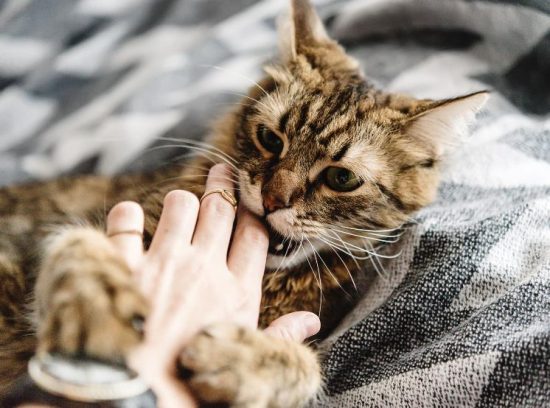
It’s common for cats to couple their kneading behavior with “love bites” or gentle nipping. This is often a result of the cat’s relaxed and bonded state, as the kneading can be so soothing that it leads to overstimulation. However, if the cat’s biting becomes more aggressive, it may be a sign of disruption or a desire for space and privacy.
Overstimulation or Disruption
When cats deeply engage in the pleasurable act of kneading, they may become temporarily overstimulated, leading them to express this through gentle nibbles or love bites. This behavior is not intended to cause harm but rather is a natural extension of their content state. Understanding when your cat’s love bites result from overstimulation can help you respond appropriately and avoid any potential escalation of the behavior.
Desire for Space or Anxiety
Conversely, cats may bite harder during kneading if they feel anxious or stressed. This can be a sign that they need some space and privacy, or that there is an underlying issue causing them distress. In these cases, it’s important to consult a veterinarian to address the root cause of the cat’s anxiety and modify the environment or routine to support their well-being better.
Understanding the context and reasons behind a cat’s love bites can help owners respond appropriately and maintain a positive, trusting relationship with their feline companions. By recognizing the nuances of this behavior, cat owners can better meet their pets’ needs and foster a harmonious home environment.
FAQs on Why Do Cats Make Biscuits
What does it mean when cats make biscuits?
When cats make biscuits, also known as kneading, it is an instinctual behavior that stems from their kittenhood when they would knead their mother’s belly to stimulate milk flow. As adults, cats continue this behavior as a comforting ritual from their early days.
Why do cats make biscuits on soft blankets?
Cats often knead on soft, warm surfaces like blankets, pillows, or their human’s lap to create a cozy spot to settle down and relax. This instinctual behavior helps them make their resting spot as comfortable as possible.
Why does my cat knead me but not my husband?
Cats often reserve their kneading behavior for trusted individuals, indicating that they feel comfortable and safe in their presence. By kneading on their owner, cats are also marking them as part of their territory, demonstrating the trust and attachment they have developed with their human.
Why do cats purr and knead?
Cats often purr and knead when they are content, relaxed, and seeking comfort or preparing for rest. The rhythmic motion of kneading can be soothing for cats, similar to how humans may enjoy kneading dough when baking, and is associated with pleasurable emotions.
How do you tell if your cat loves you?
When cats knead on their human companions, it can be a sign of affection and bonding. Cats often reserve this behavior for trusted individuals, indicating that they feel comfortable and safe in their presence, making kneading a clear expression of feline love and companionship.





